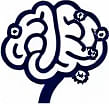The Power of Marginal Thinking in Everyday Decisions
 by Shanie Goodwin
by Shanie Goodwin
Marginal thinking offers a practical way to make better choices by focusing on small changes. This mental model applies to personal finance, business strategies, and cognitive growth, helping individuals assess incremental benefits and costs for improved outcomes. Learn how to integrate it into daily life.

Marginal thinking is a concept that centers on evaluating the additional benefits and costs of a decision. This approach helps in making choices based on incremental changes rather than overall sums.
In its core, marginal thinking involves looking at the extra effort or resources needed for one more unit of action. For instance, it can apply to deciding whether to work an extra hour or buy one more item. By focusing on these small additions, people can avoid waste and optimize their resources.
One key area where marginal thinking shines is in personal finance. Consider budgeting: instead of overhauling an entire plan, individuals might assess the cost of a single purchase. This method encourages thoughtful spending by weighing if the extra expense brings enough value.
In business, this model aids in resource allocation. Leaders often use it to determine if hiring another employee will yield sufficient returns. By examining the marginal benefits, companies can scale operations without unnecessary risks.
Psychology also benefits from this idea. It relates to habit formation, where small adjustments lead to lasting changes. For example, adding a few minutes of exercise daily can build routines over time, showing how incremental steps foster cognitive development.
Applications in Daily Life
People encounter opportunities to use marginal thinking in routine activities. When planning meals, one might evaluate if preparing an extra portion saves time later. This practice promotes efficiency and reduces decision fatigue.
In education, students can apply it to study sessions. Rather than cramming for hours, they might consider the gains from an additional 15 minutes. Such strategies enhance learning without overwhelming the mind.
For professionals, marginal thinking supports career growth. Evaluating the benefits of pursuing further training helps in deciding if the investment aligns with long-term goals. This targeted approach keeps development focused and effective.
Benefits of Marginal Thinking
Adopting this model offers clear advantages. It simplifies complex decisions by breaking them into manageable parts. Users often find they make fewer impulsive choices, leading to better outcomes in various areas.
Moreover, it encourages adaptability. In a changing environment, assessing marginal changes allows for quick adjustments. This flexibility is vital for both personal and professional success.
From a cognitive perspective, regular use strengthens decision-making skills. Over time, individuals notice improved problem-solving abilities, as they learn to prioritize what truly matters.
Practical Steps to Implement Marginal Thinking
To start, begin with small decisions. Track the additional costs and benefits of everyday actions, such as extending a walk or delaying a purchase. Keeping a simple journal can highlight patterns and insights.
In teams, discuss marginal impacts during meetings. For projects, evaluate if extra features justify the effort. This collaborative method ensures balanced progress.
Over time, this practice builds awareness. It trains the mind to think critically about increments, fostering a habit that supports ongoing improvement.
Challenges and Considerations
While helpful, marginal thinking requires attention to detail. Overlooking subtle factors can lead to errors. Thus, combining it with other strategies, like reflection, enhances its effectiveness.
In some cases, emotions might cloud judgment. Being mindful of biases ensures that assessments remain objective and reliable.
Ultimately, integrating mental models like this one into daily routines cultivates a sharper mind. It equips individuals with tools for smarter choices, paving the way for growth in psychology and beyond.
By consistently applying these principles, anyone can achieve more with less effort, making it a valuable asset for lifelong learning.
